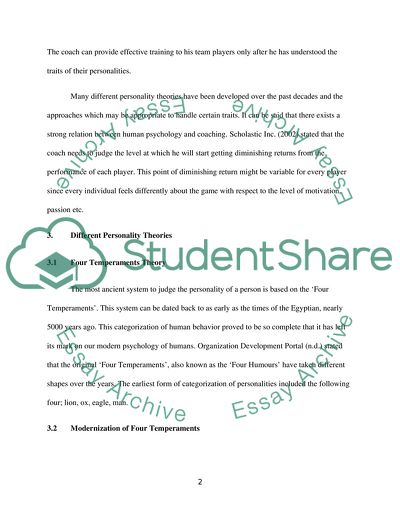Cite this document
(Coaching Different Types of Players Term Paper Example | Topics and Well Written Essays - 1250 words, n.d.)
Coaching Different Types of Players Term Paper Example | Topics and Well Written Essays - 1250 words. https://studentshare.org/sports-and-recreation/1743086-2teams-are-made-up-of-individuals-with-different-personality-types-with-the-use-of-relevant-theory-critically-discuss-the-implications-for-a-coach-or-manager
Coaching Different Types of Players Term Paper Example | Topics and Well Written Essays - 1250 words. https://studentshare.org/sports-and-recreation/1743086-2teams-are-made-up-of-individuals-with-different-personality-types-with-the-use-of-relevant-theory-critically-discuss-the-implications-for-a-coach-or-manager
(Coaching Different Types of Players Term Paper Example | Topics and Well Written Essays - 1250 Words)
Coaching Different Types of Players Term Paper Example | Topics and Well Written Essays - 1250 Words. https://studentshare.org/sports-and-recreation/1743086-2teams-are-made-up-of-individuals-with-different-personality-types-with-the-use-of-relevant-theory-critically-discuss-the-implications-for-a-coach-or-manager.
Coaching Different Types of Players Term Paper Example | Topics and Well Written Essays - 1250 Words. https://studentshare.org/sports-and-recreation/1743086-2teams-are-made-up-of-individuals-with-different-personality-types-with-the-use-of-relevant-theory-critically-discuss-the-implications-for-a-coach-or-manager.
“Coaching Different Types of Players Term Paper Example | Topics and Well Written Essays - 1250 Words”. https://studentshare.org/sports-and-recreation/1743086-2teams-are-made-up-of-individuals-with-different-personality-types-with-the-use-of-relevant-theory-critically-discuss-the-implications-for-a-coach-or-manager.


